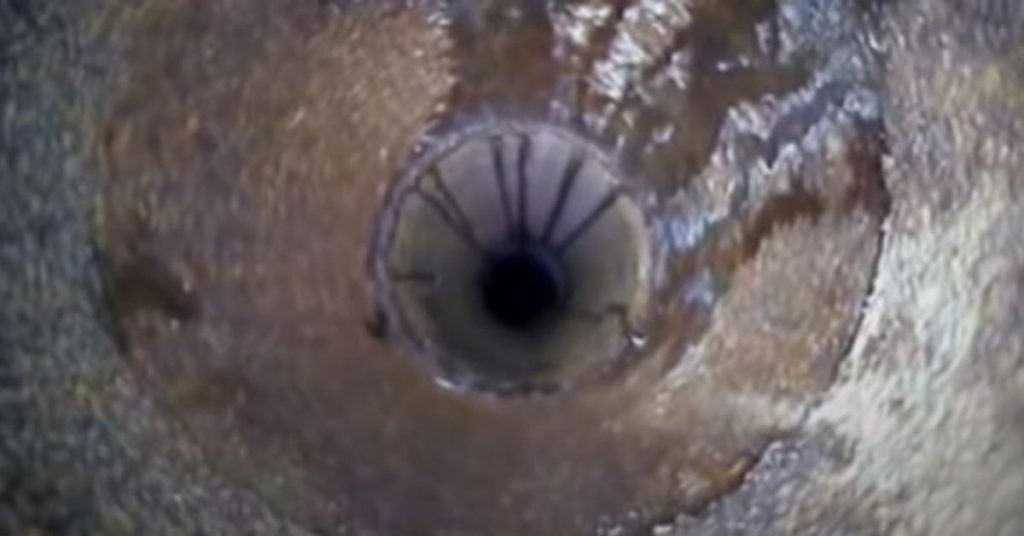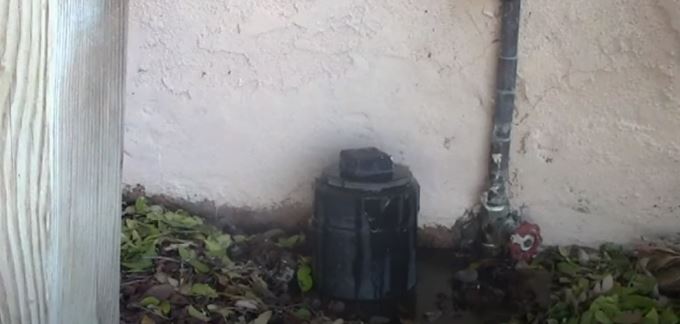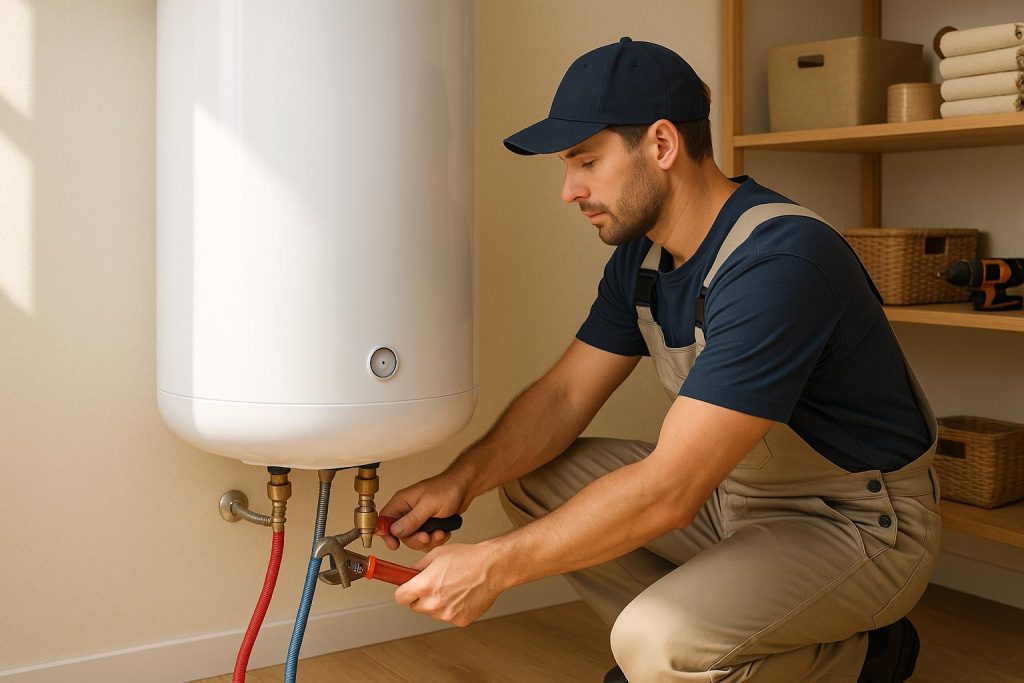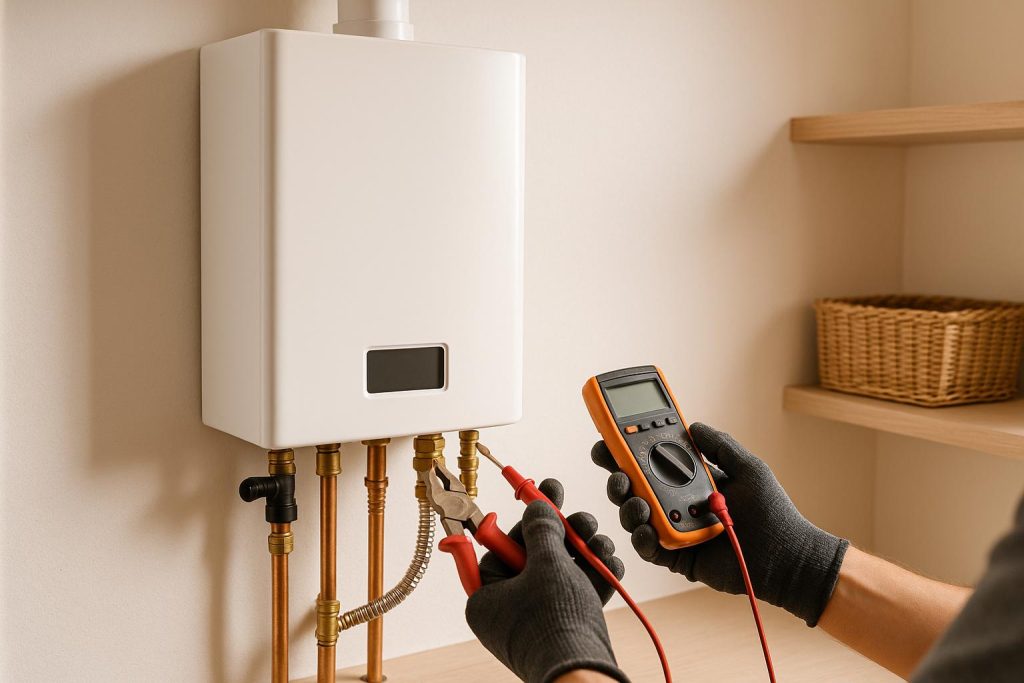In a main/sewer line inspection, a camera connected to a flexible cable is inserted inside the sewer line and as it moves along the pipes, it records the physical condition of the pipes. It has a monitor which shows clogs, cracks, tree roots and most importantly their location (depth) for accurate repairs.

Sewer Line Inspection: Key Points to Know
- Purpose: Sewer line inspection is a crucial process used to assess the condition and integrity of underground sewer systems. It helps identify potential issues, blockages, or damage within the pipes.
- Types of Inspection: Sewer line inspections can be conducted using various methods, including visual inspection, camera inspection, and smoke testing.
- Visual Inspection: This involves a simple examination of external sewer lines for signs of damage, such as cracks, leaks, or tree root intrusion. It is a preliminary assessment method.
- Camera Inspection: A specialized camera is inserted into the sewer line, providing a real-time video feed to the technician. This allows for a detailed inspection of the pipe’s interior to identify obstructions, cracks, or corrosion.
- Frequency: Sewer line inspections are recommended periodically to detect issues before they become major problems. Frequency varies depending on factors like pipe material, age, and environmental conditions.
- Maintenance: Regular inspections can help prevent costly sewer line repairs or replacements. Timely identification of problems enables proactive maintenance.
- Common Issues: Sewer line inspections often reveal common problems such as root intrusion, pipe corrosion, clogs caused by debris or grease, and pipe misalignment.
- Leak Detection: Sewer line inspections are essential for identifying leaks that can contaminate the environment and groundwater. Leaks can lead to environmental violations and health hazards.
- Safety: Inspections help ensure the safety of the public and the environment by identifying issues that, if left unattended, can result in sewage backups or spills.
- Inspection Costs: The cost of sewer line inspection varies based on the method used, the length and complexity of the sewer system, and the location of the inspection point.
- Pre-purchase Inspections: Homebuyers often opt for sewer line inspections as part of their due diligence when purchasing a property to avoid unexpected repair costs.
- Regulatory Compliance: Many municipalities have regulations requiring regular sewer line inspections to maintain public health and safety.
- Repair and Replacement: If issues are detected during inspection, repairs or replacements may be necessary. Trenchless methods, like pipe lining or pipe bursting, have become popular for minimizing disruption and cost.
- Professional Service: Sewer line inspections are typically conducted by licensed plumbing or sewer service professionals with specialized equipment.
- Environmental Impact: Proper sewer line maintenance and inspections contribute to the protection of the environment by preventing pollution and contamination.
- DIY Inspection: Homeowners can perform basic visual inspections by looking for signs of sewer issues, such as slow drainage, foul odors, or wet spots in the yard.
- Legal Implications: Neglecting sewer line maintenance and inspections may lead to legal liabilities if sewage-related problems affect neighboring properties or public infrastructure.
Sewer line inspection costs anywhere between $200 and $800 although some people pay as much as $1100. The cost depends on the company doing the inspection, the type of equipment being used, your location and the job difficulty.
How Sewer Line Inspection is Done
A sewer line inspection may sound complicated but it is actually a very easy job. There is just a camera, flexible cable rolled on a drum and screen/monitor. This is also called a sewer scope.
When the plumber gets to your house, the first thing they will do is to locate the sewer cleanout. A sewer cleanout is a 4-inch pipe with a square nut at the top of the cap sticking a few inches from the ground.

It is usually located very close to the house. In some properties cleanouts are usually found inside the house, normally in the basement.
The function of a sewer cleanout is to provide access to the sewer line. It is installed very close to the house so that you can inspect the entire length of the sewer line from the house to the city’s sewer line across the street, or septic tank.
In some properties you will find 2 sewer cleanouts. The second cleanout gives access to the main house drain pipe inside the house.
When the plumber locates the cleanout, they will remove the cap slowly, especially if the sewer line is backing up.
They will then prepare the camera and the monitor and then start feeding it down the sewer line slowly. On the monitor, you will see the inside of the sewer line where the camera is as well as the depth.
By depth I don’t mean how deep the sewer line is from the ground but how far the sewer inspection camera is from the reference point which in this case is the sewer cleanout.
So, what happens when you can’t find your sewer cleanout or when your house does not have one? Some old houses do not have sewer cleanouts.
If your house does not have a sewer cleanout, the plumber will have 2 options. The first option is to remove a toilet. Toilet drains are bigger than other fixture drain so it is the best one to feed the camera through. It will also be the best place to feed a drain snake should that be needed.
The next option is to climb to the roof of the house and access the sewer line from the plumbing vent. The vent stack is connected directly to the sewer line which makes it very practical.
Without a sewer cleanout, it means that your plumber will do extra work that they wouldn’t have if you had one. They will therefore charge more for that.
Another thing to remember is that if you need some repairs done on the sewer line, the success rate is low when done from the toilet drain or vent stack. As such, most plumbers are less likely to warranty their work.
I must however mention that although a sewer inspection camera is very effective in locating tree roots, other types of clogs and cracks in pipes, it cannot see leaks. You see, water leaks from outside the pipe and it is very difficult to see that from a cameral inside a pipe.
What you can do is to use the sewer camera to collaborate evidence from other sources. For instance if there is sink holes, pooling water/sewage or lush green patches in your yard which you suspect to be a leak, you can use the sewer inspection camera to investigate further.
A sewer line camera will however tell you what the material of sewer line you have. Your cleanout maybe made of PVC but that does not mean that the entire length of sewer line is made of PVC.
Sewer line inspections can also tell if you have bellied or sagging pipes. When that happens, the slope of the sewer line is lost resulting in frequent leaks.
Should You Get a Sewer Line Inspection?
Sewer lines are those things in your house that are always out of sight and out of mind but trust me, you sewer line will occupy your mind when it doesn’t work as well as it should.
So, who is a good candidate for a sewer line inspection? Do You really need a sewer line inspection?
Call a reputable plumbing company for a sewer line inspection if you have any of these signs:
1. Slow drains
If your bathtub is draining slowly but all the other fixtures are draining as good as they should, the problem is restricted to the bathtub drain line. On the other hand, if all the fixtures in your house are draining slowly, you most likely have a clogged sewer line.
Waste drains out of your house via gravity so flushing solids that you should flush or dumping grease in drains will result in clogs. Slow drains are caused by partial clogs (and hence the slow draining fixtures) before developing into solid clogs.
Before concluding that you indeed have a clogged sewer line, you should first check if it is the plumbing vent that is clogged since that is what balances air pressure inside and outside drain lines. Clogged vents are also characterized by gurgling drains and sewer smells in the house.
2. Sewage Backups

When the sewer line is fully clogged, wastewater from the house will have nowhere to go but to backup through your lowest drains which are usually in the basement.
You do not need to have your sewer line inspected the first time it clogs or backs up but if it clogs and backs up frequently it means something is not right and you should definitely have it inspected.
3. Sewer Smell Outside
Is there a sewer smell outside your house? That in most cases is caused by leaking sewage from the sewer line. As the sewage permeates through the soil in the yard, it warms up as the temperature outside rises which results in sewage smells.
Other signs of a leaking sewer line are when there is an unusually green patch of grass in your yard, but sometimes you could have sink holes or even cracking slab.
Instead of digging up a trench across the sewer line, you should just have the whole line inspected using a sewer camera. It is fast and cheap.
4. Trees Nearby
Tree roots will naturally grow towards sources of water and nutrition. Your domestic waste provides exactly that.
With time, some fissures/cracks develop along sewer lines especially those made from cast iron and clay.

Tree roots force themselves through these tiny cracks and once inside the sewer line they multiply rapidly. The tree roots restrict the flow of waste down to the public sewer line by trapping solids and hence result in clogs.
If you have trees around your property and do not have PVC sewer lines, you should have the sewer line inspected once every 2 to 5 years. If there are tree roots inside the sewer line, they will be seen on the screen and blades connected to a drain snake will be used to cut them.
5. When Buying a House
What happens when you buy your dream house but then 3 months down the line you suffer massive sewage backup in the basement?
As I mentioned earlier, sewer back ups are not covered by homeowners’ insurance. Secondly, the sewer line from your house to the street is your responsibility and not the city’s.
The repairs will cost you thousands of dollars or even tens of thousands of dollars if you have to replace the sewer line.
Compare that to the 200 to 500 dollars it would have cost you to have the sewer line inspected prior to buying the house.
Since most house inspectors are not familiar with sewer line inspections, lack the tools and knowledge to carry the inspection or both, sewer inspection reports are not included in the standard house inspection reports.
I would therefore implore you to hire a third party to do the inspection for you and negotiate with the seller if there are any problems.
The same is also true if you want to sell a house. With a good sewer line inspection report, you are likely to sell your house faster and at a better price.
Sewer Line Repair after Camera Inspection
The results from your sewer line camera inspection will help the plumber recommend the best method to repair the pipes.
If there are tree roots inside the sewer line, the plumber will use differences sizes of blades connected to a drain snake to cut them. They will then run the camera again to ensure that the problem is properly fixed.
In case of a cracked section of pipe, the plumber will most likely recommend trenchless sewer line repair. With this method a whole section of pipe can be replaced without digging a trench across the yard.
You don’t even need to remove the old sewer line. It is used as a host for the new pipe. All this is done through the sewer cleanout.
The first thing to do is to thoroughly clean the sewer line via hydro jetting. This involves blasting water under high pressure through a jet to remove all debris from the sewer line.
After the sewer line is cleaned, a flexible epoxy-saturated liner is installed directly inside the existing sewer line. The plumber will then wait for the epoxy to harden, forming a new sewer line inside the old and then run the camera again just to be sure it is well set.
Pipe bursting is another method also where the old sewer line is forced out and a new line is pushed in to take its place. With this method, you can even install large sewer pipe that the previous one.
If unfortunately the sewer inspection report indicates that the sewer line is sagging/bellied, you will have no alternative other than to dig it out the traditional way and have it replaced.





